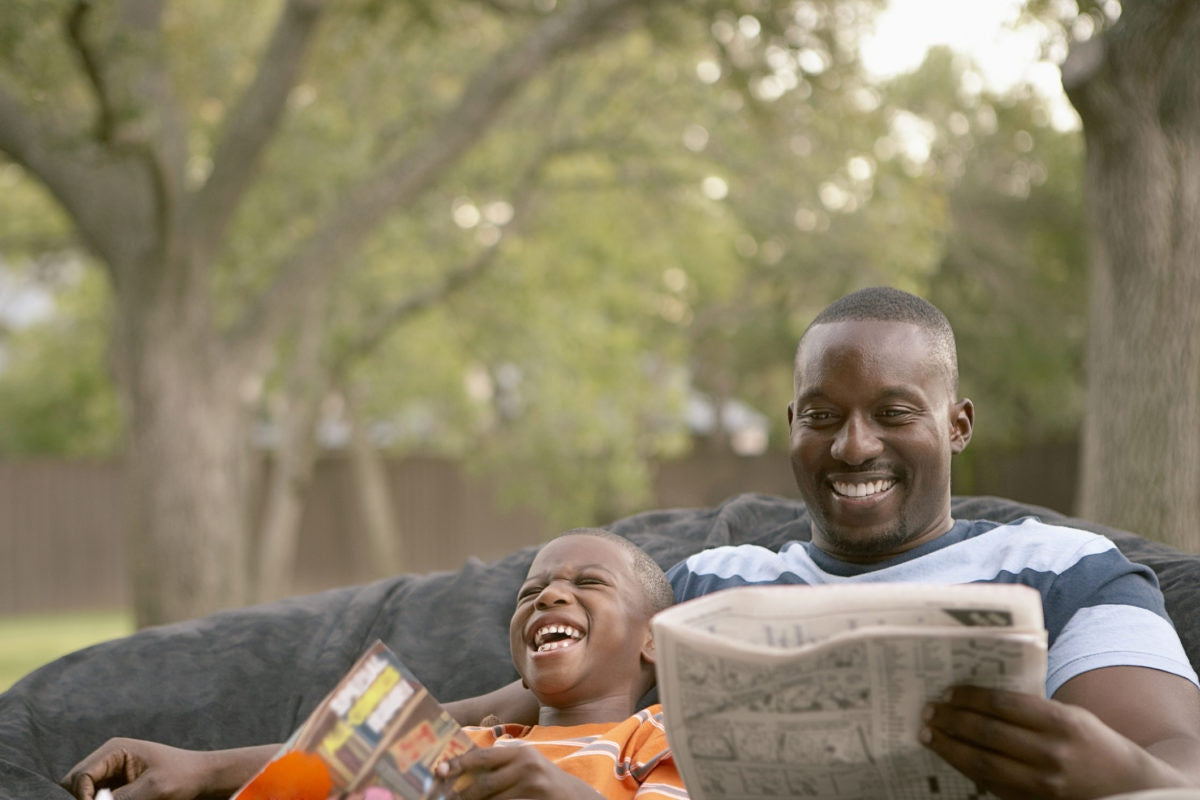Parents are professionals at fielding advice from loved ones. Often it is unhelpful or simply won't work for your family. However, there are those few pieces of advice that actually work. You end up incorporating it into your daily routines, eventually extolling that same advice to other parents in need.
One such case that seems to have an excellent track record for working out well is the idea of putting your kids in water to cheer them up on a particularly difficult day. Baths, swimming, or a good mud puddle can alter the mood of a child and transform the trajectory of your afternoon. One of the many reasons why this works so well is the human body's biological and psychological responses when it is submerged or simply near bodies of water.
The body’s response to being underwater
In 1963, Scientific American Magazine published an article by P.F. Scholander entitled “The Master Switch of Life.” It detailed Scholander’s study of free divers and how the body responds as it reaches certain depths. As a researcher, he'd examined Weddell seals and determined that they would gain more blood oxygen the deeper they dove, and he was interested in the way the human body responded to diving. By gathering free divers for his research, he would measure their blood oxygen levels at various depths in a large tank of water. He determined that humans and seals have a Mammalian Diving Reflex.
The results are nearly instantaneous when your body hits the water. Your heart rate decreases and, as Scholander discovered, your body begins to shunt blood and oxygen towards vital organs and away from your extremities (this is called peripheral vasoconstriction). He discovered a similar response in his work with the Weddell seals and was able to attribute it to mammals in general.
Splashing water on your face
These bodily reflexes engage the moment your face is submerged in water and also works with the simple act of splashing water on your face. This response is not triggered by placing your feet, arms, or whole body in water. The biology behind this reaction lies in receptors that are sensitive to cold, which are located in your face and nasal cavity.
When cool water touches your face and is paired with holding your breath, the autonomic nervous system receives messages from these receptors and automatically begins to slow your heart rate. This is called facial bradycardia and has the effect of slowing your heart rate by ten to twenty-five percent. The key to this is submerging your face in water that is cooler than 70 degrees Fahrenheit. The temperature difference stimulates the response to your nervous system.
Why does this work to calm humans down?
It's fairly general knowledge (because you can feel it within your own body) that a fast heart rate correlates to being scared, upset, worried, anxious, nervous, and more. Alternatively, a lower heart rate induces a relaxed, calm state. This is why when kids (and adults) are upset, you can help by reminding them to breathe deeply. Slowing your breathing often results in a slower heart rate. If your child is upset, then reducing his or her heart rate through thoughtful breathing is often the first step in calming crying and outbursts.
The regulation of the heart rate, along with breathing, is the job of the autonomic nervous system. When you feel upset, threatened, or are in danger, the autonomic nervous system activates your fight or flight response. This increases your heart rate, the rate of your breathing, and floods your body with adrenaline.
The autonomic nervous system is also in charge of how your body responds to temperature and water by reducing your heart rate and triggering facial bradycardia and the Mammalian Diving Reflex. This is particularly the case when young children are introduced to a body of water because it correlates strongly with being in the womb surrounded by amniotic fluid.
The psychology of water
While the Mammalian Diving Reflex addresses how your body responds to water, it does not examine directly how humans psychologically respond to water. A marine biologist named Wallace J. Nichols studied humans' attraction to water in his book, “Blue Mind: The Surprising Science That Shows How Being Near, In, On, or Under Water Can Make You Happier, Healthier, More Connected, and Better At What You Do.”
He states, “We are beginning to learn that our brains are hardwired to react positively to water and that being near it can calm and connect us, increase innovation and insight, and even heal what’s broken.”
The simple act of gazing out at water is calming and can induce a meditative state. If you imagine yourself on a relaxing vacation, it most likely involves a body of water (the beach, swimming in a lake, boating, or even a cruise). Research shows that being near water lowers stress levels, reduces anxiety, promotes mental clarity, as well as improves sleep quality.
Sage advice for parents
When you couple the bodily and psychological responses to water, you can begin to see why putting kids in or near water will relax them and turn their moods around.
Parents all have those days. It might be that the 10 pairs of leggings you pull from the clean laundry are not the ones your four-year-old wants to wear today; maybe the baby has been teething for the past three days and it's been hard on both of you; or maybe it's been a good day but your tired kid is having a hard time with the last hour before bedtime. Whatever the scenario, moods and behaviors of kids (and adults) can be challenging, but you have a go-to remedy in your back pocket.
Bath time, running through the sprinklers, swimming, playing in the rain, splashing in puddles, exploring a brook or stream, or simply playing with water in the sink are quick and easy ideas that can help you and your kids. If your kids are at the age where putting their faces in water is not within their comfort zone, remember that there are significant psychological benefits to being around water. Mixing bowls and a few tools are quick and easy ways to engage your little one with water (this may be something that could give you a few moments of rest as well). Bath time is often a pre-bedtime routine because of the relaxing quality of water, but it can also be a morning activity if you need to reset the mood and trajectory of a day.
In the end, the wise advice of putting your kids in water to change a mood or calm a child down is a science-backed trick that works. If your child is struggling, you now have one more tool in your parenting tool belt. If you, as the parent, are struggling with your day, remember to splash a bit of cool water on your face, take a few deep breaths, and try and reset your day. You got this.


